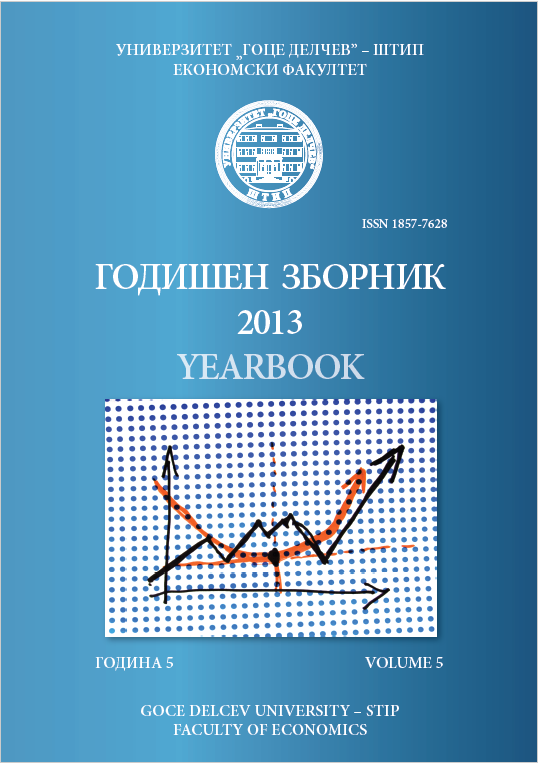ОСНОВНИТЕ ПРИНЦИПИ ЗА ВОДЕЊЕ НА ОПТИМАЛНА МОНЕТАРНА ПОЛИТИКА
Keywords:
Monetary Policy, principles, inflation, price stability, Nominal Anchor, The Time-Inconsistency Problem, Expectations.Abstract
The recent financial crisis, however, does require some major rethinking
about the details of this basic framework for monetary policy strategy. We
now recognize that the financial sector plays a very prominent role in the
macro economy and makes it highly nonlinear at times ever, and in some
ways, moreso. The theory of optimal monetary policy starts by specifying an
objective function that represents economic welfare, that is, the well-being of
households in the economy, and then maximizes this objective function subject
to constraints that are provided by a model of the economy. Before the crisis,
both the objective function and the model of the economy were based on the
principles of the new neoclassical synthesis. The bad news is that we have just
been through a once-in--hundred-year credit tsunami that has had a devastating
impact on the economy that will last for years to come. The good news is that
macro/monetary economists and central bankers do not have to go back to the
drawing board and throw out all that they have learned over the last forty years.
Much of the science of monetary policy remains intact. However, the essence
of the optimal monetary policy and its stabilization policy is based on several
basic principles that will be analised in more detail within this paper.

